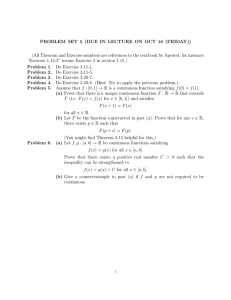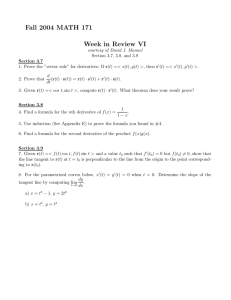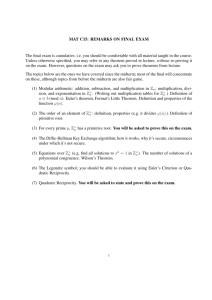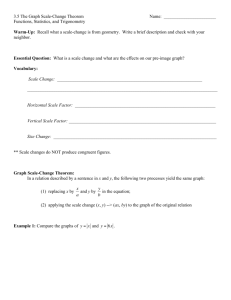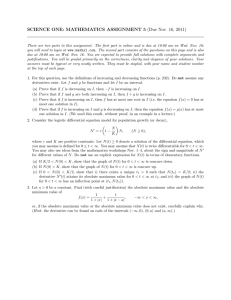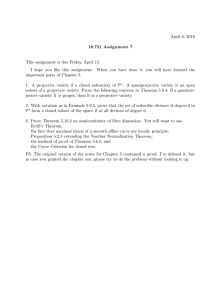Fall 2004 MATH 171 Week in Review IX
advertisement
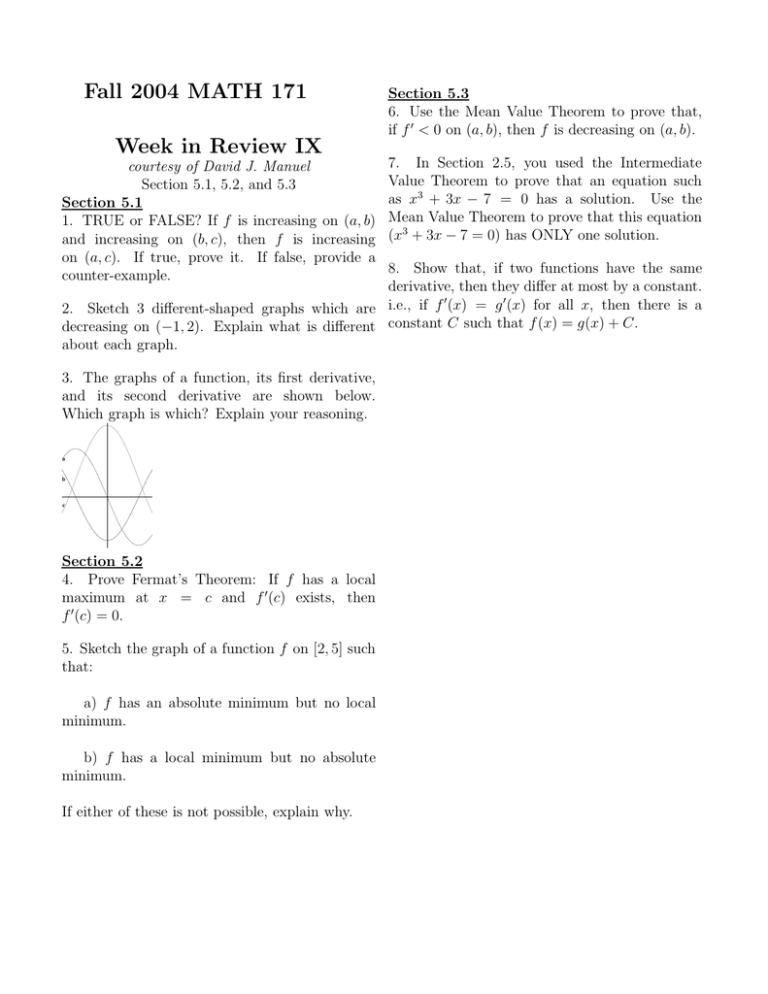
Fall 2004 MATH 171 Week in Review IX courtesy of David J. Manuel Section 5.1, 5.2, and 5.3 Section 5.1 1. TRUE or FALSE? If f is increasing on (a, b) and increasing on (b, c), then f is increasing on (a, c). If true, prove it. If false, provide a counter-example. Section 5.3 6. Use the Mean Value Theorem to prove that, if f 0 < 0 on (a, b), then f is decreasing on (a, b). 7. In Section 2.5, you used the Intermediate Value Theorem to prove that an equation such as x3 + 3x − 7 = 0 has a solution. Use the Mean Value Theorem to prove that this equation (x3 + 3x − 7 = 0) has ONLY one solution. 8. Show that, if two functions have the same derivative, then they differ at most by a constant. 0 0 2. Sketch 3 different-shaped graphs which are i.e., if f (x) = g (x) for all x, then there is a decreasing on (−1, 2). Explain what is different constant C such that f (x) = g(x) + C. about each graph. 3. The graphs of a function, its first derivative, and its second derivative are shown below. Which graph is which? Explain your reasoning. a b c Section 5.2 4. Prove Fermat’s Theorem: If f has a local maximum at x = c and f 0 (c) exists, then f 0 (c) = 0. 5. Sketch the graph of a function f on [2, 5] such that: a) f has an absolute minimum but no local minimum. b) f has a local minimum but no absolute minimum. If either of these is not possible, explain why.
